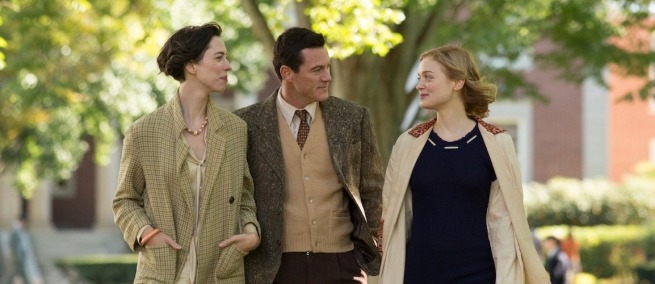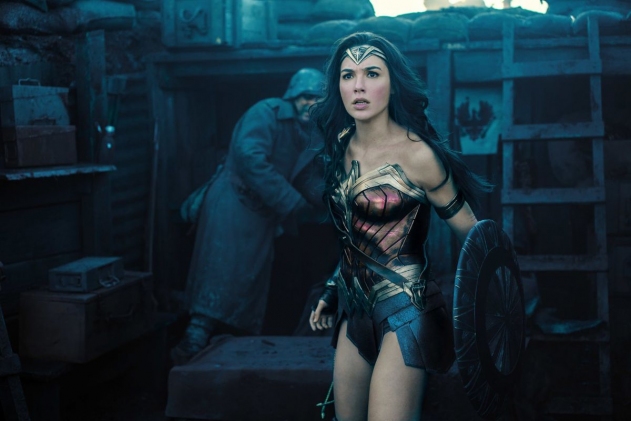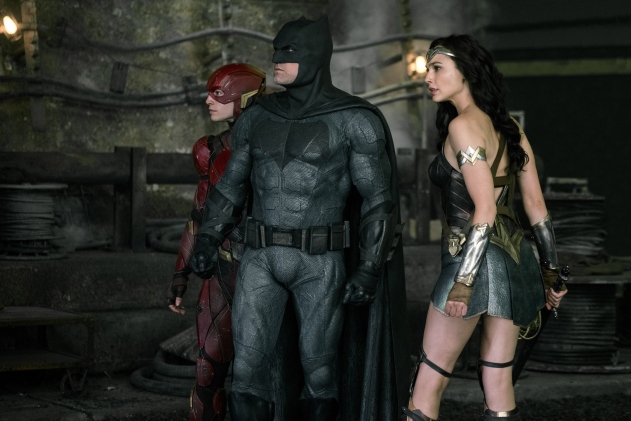
[Editor’s Note: This year, for the first time in film history, Wonder Woman headlined a film. Patty Jenkins' WONDER WOMAN stars Gal Gadot, as does Zack Snyder’s new JUSTICE LEAGUE film. Angela Robinson’s 2017 feature PROFESSOR MARSTON AND THE WONDER WOMEN is about Wonder Woman’s creator William Moulton Marston. Science & Film asked John T. Jost, a psychology professor and Co-Director of NYU’s Center for Social and Political Behavior, to write about Marston and the origins of Wonder Woman.]
When my four year-old daughter came home after shopping for Halloween costumes with a Wonder Woman outfit, I was decidedly ambivalent. I was proud of her feminist spirit and, at the same time, apprehensive about the revealing, strangely sexualized nature of the costume. Could it be that nearly all of us have felt this way about Wonder Woman at some point in her 76-year history? If so, there are ample psychological reasons for our ambivalence, which have been captured cinematically by director Angela Robinson in PROFESSOR MARSTON AND THE WONDER WOMEN.
William Moulton Marston (creator of Wonder Woman) and his wife, Sadie Elizabeth (Betty) Holloway, were committed to living unconventional lives. There can be little question that they succeeded. Their story is fascinating, and one marvels not only at the expansiveness of their personal, cultural, and political interests but also at the privacy they enjoyed during the early 20th century.

William studied philosophy, psychology, and law at Harvard University with the legendary—and legendarily sexist authoritarian—Hugo Münsterberg, who was brought to the U.S. by William James to set up one of the first psychology laboratories in the country [editor’s note: Münsterberg’s 1916 book Photoplay: A Psychological Study is one of the first film theory publications]. Münsterberg’s early work addressed sensation and perception, but by the time Marston matriculated the lab was focused on lie detection and the psychology of jury decision-making.
After attending law school and earning a doctorate in psychology, William published a book entitled Emotions of Normal People in 1928. He recounts a pivotal childhood memory in which his mother forced him to confront a neighborhood bully. What did he take from the episode? He felt that his mother’s domineering behavior had served to release his own latent capacity for dominance. More specifically, it was his submission that allowed her dominance to flow through him. “Dominance and submission,” he wrote, “are the ‘normal,’ strength-giving emotions, not ‘rage,’ or ‘fear.’”
The emotional dynamics of dominance and submission, from Marston’s viewpoint, were fundamental not only to animal life but to human nature, emerging in early childhood. On the basis of interviews conducted with prisoners in Texas, he concluded that there is a symbiotic relationship between strength and weakness. A “stronger force” gains energy by dominating a “weaker force,” but the latter is able to exert control over the former by drawing it into hot pursuit. In many cases, he writes, “the fugitive wants to be chased.” Years later, after being squeezed out of academia and working for a short time at Universal Studios, William put his theory of dominance and submission to the test not in a laboratory but in a comic book.

During his years as a psychology professor William fell in love with one of his students, Olive Byrne, who happened to be the niece of feminist icon, sex educator, and birth control activist Margaret Sanger. William and Elizabeth eventually invited Olive to live with them (she pretended to be Elizabeth’s widowed sister-in-law), and they enjoyed a clandestine, seemingly satisfactory polyamorous lifestyle until William died at the age of 53. In Jill Lepore’s scintillating book, The Secret History of Wonder Woman, it is hypothesized that Olive was the primary inspiration for the wildly popular, and controversial, comic book character who arrived on the American scene in 1941—just three years after Superman.
Wonder Woman was a radical, revolutionary kind of comic book that initially struck his partners as preposterous. But William, who wrote Wonder Woman under a pseudonym, was obviously onto something profoundly compelling. In the 1940s, the American public desperately wanted—without even knowing it—a sexy, scantily clad, powerful heroine who arrived mysteriously from an island of Amazons to “kill Nazis” and struggle for peace, justice, and women’s rights. Wonder Woman was subjected frequently to villainous sadomasochistic encounters—which alarmed the critics—and her powers were neutralized when men placed her in chains. But she always emerged victorious in the end.
William Moulton Marston died in 1947. He left behind two brilliant lovers, both in mourning, their lives forever intertwined. He lived long enough to see mass burnings of comic books in the U.S. but was spared the Warner Brothers’ backlash against his feminist message—and against his lurid exploration of bondage and discipline. In the 1950s and 1960s, Wonder Woman lost her edge completely; she was portrayed as a babysitter, a fashion model, a movie star, and a desperate gal obsessed with marriage. Fortunately, Ms. magazine and the “Women’s Lib” movement brought her back to life in the 1970s, and Lynda Carter took her to primetime television. Since then, the world’s most celebrated female superhero has been with us more or less as William, Elizabeth, and Olive imagined her. Against all odds, Wonder Woman slips her chains and runs away; in a state of compulsion, we cannot help but follow….